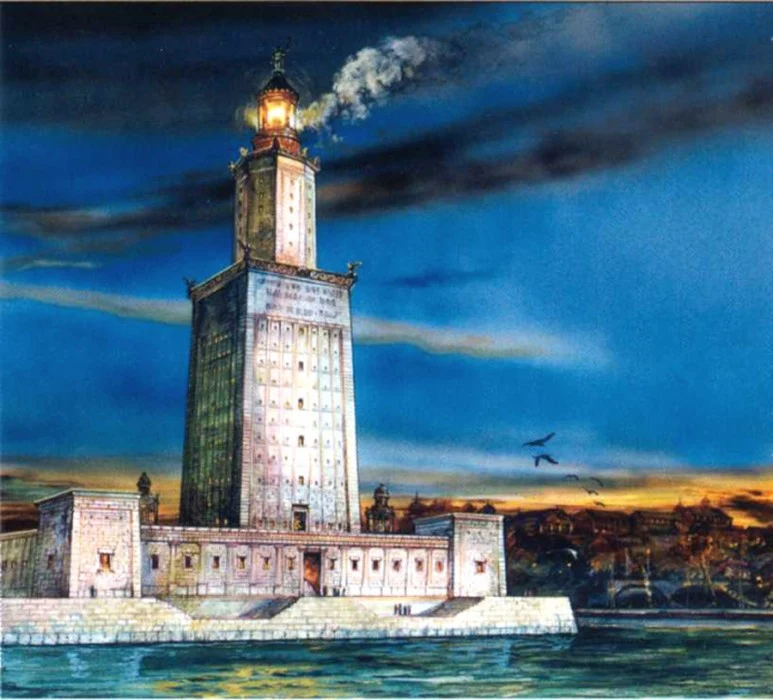Only one of the seven wonders of the ancient world had a practical purpose - the Lighthouse of Alexandria. He performed several functions at once. It allowed ships to approach the harbor without any problems, and the observation post, located at the top of the unique structure, made it possible to follow the expanses of water and notice the enemy in time.
 |
| Lighthouse of Alexandria |
Locals claimed that the light of the Lighthouse of Alexandria burned enemy ships even before they approached the shore. And if they did manage to approach the coast, the statue of Poseidon, located on the dome of an amazing structure, emitted a shrill warning cry.
Lighthouse of Alexandria: a short description for the report
The height of the old lighthouse was 140 meters - much higher than the surrounding buildings. In ancient times, buildings did not exceed three floors, and against their background, the Pharos lighthouse seemed huge. Moreover, at the time of the completion of construction, it turned out to be the tallest building of the ancient world and had been such for an extremely long time.
The Lighthouse of Alexandria was built on the east coast of the small island of Pharos, located near Alexandria, Egypt's main seaport, built by Alexander the Great in 332 BC. It is also known in history as the Pharos lighthouse.
 |
| Lighthouse of Alexandria |
It is one of the most famous wonders of the ancient world, along with the Colossus of Rhodes, the Hanging Gardens of Babylon and the gate of the goddess Ishtar.
The great commander chose the place for the construction of the city very carefully: he initially planned to build a port in this region, which would be an important trade center.
It was extremely important that the Lighthouse of Alexandria was located at the intersection of both water and land routes of the three parts of the world - Africa, Europe and Asia. For the same reason, at least two harbors had to be built here: one for ships arriving from the Mediterranean Sea, and the other for those who sailed along the Nile.
Therefore, Alexandria was not built in the Nile Delta, but a little to the side, twenty miles to the south. When choosing a place for the city, Alexander took into account the location of future harbors, while he paid special attention to their strengthening and protection: it was very important to do everything so that the waters of the Nile did not clog them with sand and silt (especially for this, a dam was subsequently built connecting the continent with an island).
Lighthouse of Alexandria on the island of Pharos: purpose
The Lighthouse of Alexandria made it possible for ships to sail into the port without any problems, successfully bypassing pitfalls, shallows and other obstacles of the bay. Due to this, after the erection of one of the seven wonders, the volume of trade of light increased dramatically.
 |
| Lighthouse of Alexandria |
The lighthouse also served as an additional reference point for sailors: the landscape of the Egyptian coast is quite diverse - mostly only lowlands and plains. Therefore, the signal lights at the entrance to the harbor were very useful.
A lower structure would have successfully coped with this role, so the engineers assigned another important function to the Lighthouse of Alexandria - the role of an observation post: the enemies usually attacked from the sea, since the country was well defended by the desert from the land side.
It was also necessary to establish such an observation post at the lighthouse because there were no natural heights near the city where this could be done.